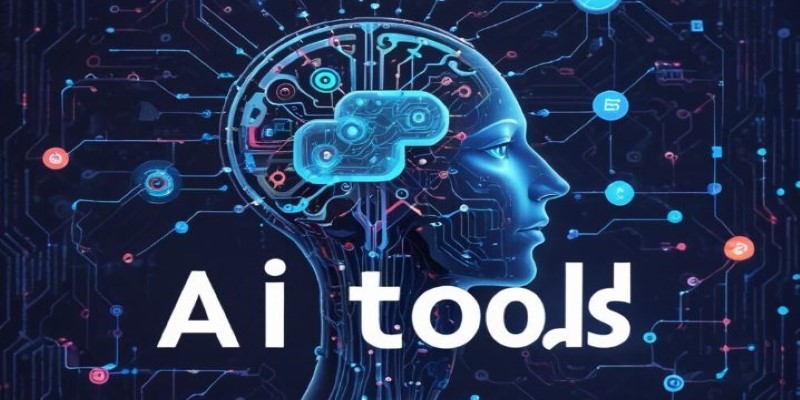Advertisement
Generative AI is exciting, and it’s no surprise that many businesses are eager to jump in. But here’s the problem. Is it really working and helping businesses? Companies can end up spending money on tools and tech that don't actually move the needle. So, it's important to measure the return on investment (ROI). When you don’t track ROI, it’s easy to lose sight of what’s working and what’s not. It can lead to much confusion and losses. So, in this article, we’ll discuss how to measure the ROI of generative AI the right way and what benefits it can give to businesses.

Generative AI is a type of artificial intelligence that can create new content. Such as, it can write text, make images, design videos, or even write code. It learns from existing data and then uses that knowledge to produce something new. Generative AI is more creative than regular AI. For example, tools like ChatGPT are used for writing, DALL-E is used for images, and Codex is used for code. These tools can actually help businesses complete tasks more efficiently and effectively.
Now let’s talk about ROI Return on Investment. It is a way for businesses to measure the benefit or profit they gain from investing in something, such as generative AI. In simple terms, companies can understand if the money they have spent is worth it or not. They do this by comparing the gains, such as cost savings, increased sales, or improved efficiency, to the costs involved.
Why Measuring ROI Matters for Businesses
Understanding ROI (Return on Investment) is important. This approach enables businesses to make informed decisions and maximize their time, money, and resources.
To determine the ROI of generative AI, they track specific metrics. These few metrics are explained below:
One of the simplest ways to measure ROI is through financial impact. Many companies experience a significant increase in revenue after adopting generative AI. Why? Because it enhances customer engagement, helps personalize products, and accelerates innovation. For example, AI-driven personalized shopping can boost conversion rates by up to 15%.
Generative AI also helps teams get more done in less time. It speeds up everyday tasks. It is easier to generate reports or answer customer questions. Business owners often measure this using a time-to-task metric. It helps them to see how much faster things are getting done. Now, employees can focus on higher-value tasks. Some companies have reported that employee productivity has doubled since adopting AI.
AI doesn't just speed things up; it also enhances efficiency. It can also reduce errors. AI helps improve accuracy and reduce risks in multiple tasks. Customer experience also gets a big boost with generative AI. AI chatbots and personalized service features often lead to happier, more loyal customers. Companies measure this using customer satisfaction scores, feedback forms, and surveys.
Not all ROI is about dollars and stats. Generative AI eases employee workloads, reduces stress, and improves morale. In this way, the employees become happy. Happier teams are more engaged and more productive. AI also makes companies more agile. It allows them to make quicker decision-making. Plus, having a reputation as an AI-forward brand can attract both new customers and top talent.

It might sound complex to measure the return on investment (ROI) of generative AI, but it doesn't have to be. By following these steps, you can easily find the ROI even on your own without the need for anyone's help.
The first thing you need to do is write down every cost related to the AI project. That means obvious things like software, hardware, and salaries. But don’t forget the hidden ones. It may include training sessions, ongoing support, and even the time your team spends learning the system. Being as detailed as possible helps you avoid surprises later on.
Next, take a close look at what the AI is actually helping with. Is it saving time? Cutting labor costs? Increasing sales? It could be improving the customer experience or reducing errors. Whatever the benefits are, try to separate what’s directly coming from the AI and what’s just general business growth. That way, you get a clearer picture of what AI is really doing for you.
Now, it's time to turn those improvements into actual numbers. For example, if AI saves 20% of your customer support team's time, figure out how much that time is worth in dollars. Or, if it's increasing sales, calculate the extra revenue.
Take the total benefits (in dollars) and subtract the total costs. That gives you your net profit. Let's say your AI project costs $100,000 and generates $150,000 in value. Your net profit would be $50,000. Now, Plug It Into the ROI Formula
Here’s the classic ROI formula:
ROI = (Net Profit / Cost of Investment) × 100
Using our example,
ROI = ($50,000 / $100,000) × 100 = 50%
That means for every dollar you spent, you earned back $1.50 in value.
A 50% return in one year is much better than the same return over five years, right? That’s why it helps to factor in how long it takes to see results. This is called annualized ROI, and it lets you compare short-term and long-term projects more fairly.
ROI isn’t something you calculate just once and forget about. Costs and benefits change over time. So it's smart to track them regularly. That way, you can adjust your AI strategies to keep improving your results.
Generative AI is a powerful tool. It is transforming how businesses operate, expand, and engage with their customers. But simply adopting AI isn't enough. What truly makes a difference is using it with purpose. You can track results and learn as you go. Generative AI can bring a lot of benefits to businesses. It might not always be a smooth ride, but with the right mindset and a clear plan, the payoff can be huge.
So, take that first step with confidence. The future of business belongs to those who use AI not just smartly but wisely.
Advertisement

Vision Language Models connect image recognition with natural language, enabling machines to describe scenes, answer image-based questions, and interact more naturally with humans

How to fine-tuning small models with LLM insights for better speed, accuracy, and lower costs. Learn from CFM’s real-world case study in AI optimization

Explore the latest Twitter scam tactics, Meta Verified’s paid features, and how ChatGPT-4 is reshaping how we use AI tools in everyday life

Explore FastRTC Python, a lightweight yet powerful library that simplifies real-time communication with Python for audio, video, and data transmission in peer-to-peer apps

How to use Python’s Tabulate Library to format your data into clean, readable tables. This guide covers syntax, format styles, use cases, and practical tips for better output

A fake ChatGPT Chrome extension has been caught stealing Facebook logins, targeting ad accounts and spreading fast through unsuspecting users. Learn how the scam worked and how to protect yourself from Facebook login theft

Here’s a deep dive on Graph Neural Networks: Uses like social networks, molecules, fraud detection, and much more.

Discover the top AI search engines redefining how we find real-time answers in 2025. These tools offer smarter, faster, and more intuitive search experiences for every kind of user

Master the Python list index to access, update, and manage list elements efficiently. This guide covers simple ways to work with indexes for better control over your lists

Looking for beginner-friendly places to explore AI tools? Discover the top 9 online communities for beginners to learn about AI tools, with real examples, clear guidance, and supportive discussion spaces

SigLIP 2 is a refined multilingual vision-language encoder that improves image-text understanding across languages with greater training efficiency and real-world performance

Learn the different types of attention mechanisms used in AI models like transformers. Understand how self-attention and other methods help machines process language more efficiently